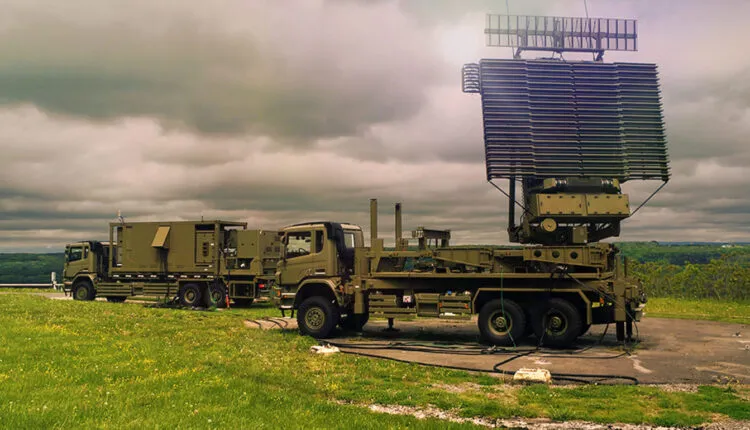communications intelligence
electronics intelligence
electronics warfare
military
military communications
military radio
radar
signals intelligence
air defense, anti-radiation missiles, ARMs, cyber warfare, defense systems, directed energy weapons, electronic attack, electronic countermeasures, electronic warfare, ELINT, EMP, EW, HPM, information warfare, military intelligence, military strategy, military technology, radar countermeasures, radar deception, radar decoys, radar jamming, radar security, radar threats, radar vulnerabilities, reconnaissance, signal intelligence, stealth technology, surveillance, target detection, terrain masking, threat assessment
9M2PJU
0 Comments
Undermining the Electronic Eye: A Comprehensive Look at Threats to Radar Systems
In the modern battlespace, radar stands as a critical sensor, providing unparalleled situational awareness across air, ground, and sea domains. Its ability to detect targets beyond visual range, regardless of weather conditions, makes it an indispensable tool for defense systems. However, this very capability makes radar a prime target for adversaries seeking to gain a strategic advantage. This blog post delves into the multifaceted threats faced by radar systems, exploring the strategies and technologies employed to neutralize their effectiveness.
The Silent Threat: Electronic Intelligence (ELINT)
The most fundamental threat to radar systems originates from Electronic Intelligence (ELINT) operations. ELINT involves the passive collection and analysis of non-communication electromagnetic signals, including those emitted by radars, navigation aids, and missile fuses. This constant monitoring, conducted during both peacetime and conflict, allows adversaries to build a comprehensive understanding of a nation’s defense capabilities.
ELINT platforms, whether airborne, ground-based, naval, or space-based, record crucial radar parameters such as frequency, pulse repetition frequency (PRF), pulse width, and scan patterns. This data is then analyzed to determine the capabilities of associated weapon systems, such as radar-guided missiles. The collected parameters are compiled into a radar order of battle, a critical resource used to program radar warning receivers (RWRs), develop jamming techniques, and guide anti-radiation missiles (ARMs).
Furthermore, ELINT platforms can direction find (DF) and locate radar systems through techniques like triangulation, providing adversaries with vital information about the deployment and readiness of a nation’s air defense network. Specialist ground-based radar DF systems can even track attacking aircraft by detecting emissions from their navigation or terrain-following radars.
Denying and Degrading Detection: Reducing Radar Effectiveness
Beyond passive intelligence gathering, adversaries employ active measures to deny or degrade radar detection. These techniques aim to delay or prevent radar systems from detecting targets, thereby increasing the element of surprise.
- Terrain Masking: This tactic involves exploiting terrain features such as mountains, valleys, and the Earth’s curvature to shield aircraft from radar detection. By flying at low altitudes or behind terrain obstacles, aircraft can penetrate enemy airspace undetected. The development of airborne early warning (AEW) radars has mitigated this threat to some extent, but terrain masking remains a viable tactic, as demonstrated during the NATO-Bosnian campaign.
- Stealth Technology: Also known as low observability technology, stealth aims to minimize the radar cross-section (RCS) of aircraft, ships, and land vehicles. This is achieved through a combination of shape optimization, radar-absorbent materials (RAM), and active cancellation techniques. By reducing the amount of radar energy reflected back to the source, stealth technology makes targets significantly harder to detect.
- Noise Jamming: This technique involves transmitting a powerful noise signal on the same frequency as the target radar. By overwhelming the radar receiver with noise, the jammer masks the echoes from real targets, effectively blinding the radar. The effectiveness of noise jamming depends on the jammer’s power and its distance from the target.
- Chaff: Consisting of small metallic strips, chaff re-radiates radar signals, creating a cloud of false echoes on the radar display. Large quantities of chaff can be deployed to conceal the movement of aircraft or ships.
Deception: Misleading the Electronic Eye
Radar deception techniques aim to manipulate the information displayed by radar systems, leading to false target tracks and inaccurate target parameters.
- Deception Jamming: This involves transmitting modified replicas of the radar signal, fooling the radar receiver into tracking false targets or providing incorrect range, velocity, or angle information. Deception jamming is more difficult to detect than noise jamming, but requires more sophisticated intelligence and technology.
- Decoys: These devices provide false targets that distract radar systems and divert attacks away from real targets. Decoys can range from simple radar reflectors to sophisticated towed decoys and active expendable jammers. Chaff can also be used in a deception role to create false target tracks.
Destruction: Eliminating the Radar Threat
While denial and deception tactics provide temporary countermeasures, the ultimate goal is often to destroy the radar system altogether.
- Conventional Weapons: Free-fall bombs, artillery, and cruise missiles can be used to physically destroy radar systems. However, these methods may expose attacking platforms to counterattacks.
- Anti-Radiation Missiles (ARMs): These missiles are designed to home in on radar emissions, destroying the radar transmitter. ARMs can be launched from aircraft, ships, or ground platforms.
- Anti-Radiation Drones: These drones operate on similar principles as ARMs, but can be pre-programmed to loiter and wait for radar activation.
- Directed Energy Weapons (DEWs): These weapons, such as high-power microwaves (HPM) and electromagnetic pulse (EMP) devices, can disrupt or destroy radar electronics without causing physical damage. HPM weapons can even disable radars that are switched off.
The Evolving Threat Landscape
The threats to radar systems are constantly evolving, driven by advancements in technology and changes in military doctrine. As radar technology becomes more sophisticated, so too do the countermeasures employed against it. The integration of artificial intelligence, machine learning, and advanced signal processing techniques will play a crucial role in both radar development and electronic warfare.
Conclusion: A Continuous Battle for Electromagnetic Dominance
Radar systems play a vital role in modern defense, but they are also vulnerable to a wide range of threats. From passive ELINT gathering to active jamming and destruction, adversaries are constantly developing new techniques to neutralize radar effectiveness. Understanding these threats and developing robust countermeasures is essential for maintaining electromagnetic dominance and ensuring the security of critical infrastructure.







Post Comment